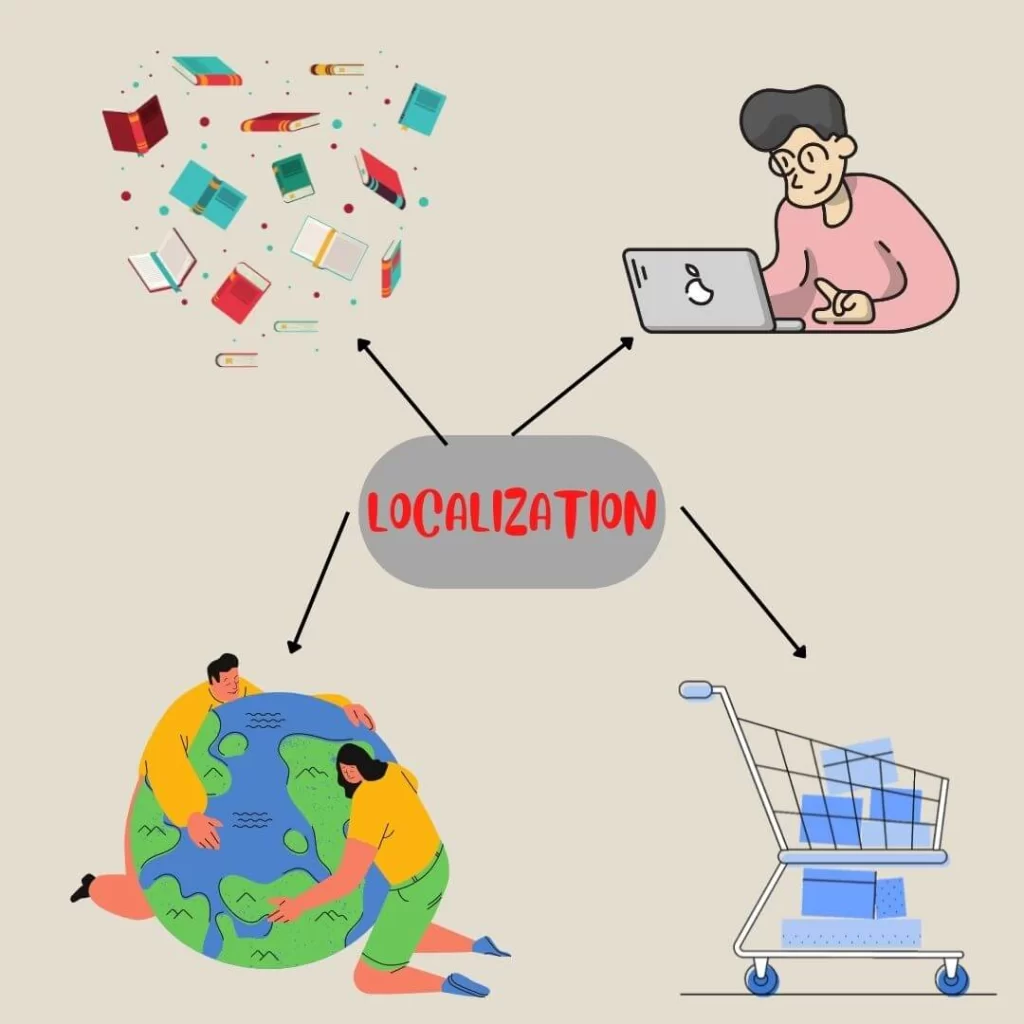Did you know creating social media content which is visibly localized improves organic performance by 2500%. Yes you read that right!
Through our native language alone, we can visualize things that we have never seen before. Localization focuses more on converting from one language to another by considering the most effective method. Localization is used to improve product sales, launch new products, and improve the efficiency of localization services.
The translation is for more official work like translating medical procedures, machine manuals, and word-to-word conversion of books. It includes machine translation and professional translations. We can say that both translation and localization are important for their respective application.

What is localization?
Localization is the process of adapting messages or text conveying your ideas or thoughts to large groups by comprehending the differences. Localization is about understanding local demand and molding your content for the target users, and not converting word-for-word meaning.
Localization is the act or process of making a product suitable for use in a particular country or region to target a market. Localization is nothing but targeting the audience by understanding their thoughts.
When do you need localization?
Localization is the best tool to reach a global audience. Many training manuals, product information manuals, advisory guidelines, legal documents, and user guidelines are written primarily in English; people will understand them better if they are localized into their native languages. Localization is needed to build trust and loyalty in local marketing to sell our products. It makes users to own our product, the following are a few localization needs:
1)Localization creates a competitive edge:
It is challenging to establish businesses in the global market. It creates trust in the customer’s mind. Gaining trust gives competitive edge.
2) Increase in revenue:
More audience means more revenue, and if you localize your products or services content to target users language, you will see your revenue skyrocket. Appointing professional translators and localization partners helps spread business globally.
3) Minimizes barriers to entry in the local market:
There are many barriers, such as compliance regarding the use of certain symbols, words, and taglines, to establishing a business in new regions. We can avoid these barriers and develop assist businesses in becoming a established brand with localization.
How does localization work?
Localization is done considering cultural references, market information, and customer requirements; the main aim of localization is to focus on the market by applying a user interface strategy. Localization is crucial to adding customers globally.
While internationalizing the mobile app, one always considers localization as the main tool to push the product into different regions. Few companies are more successful because they know how to balance global standards with local compliance based on local needs or cultural references and expand their business globally.
Localization makes the content culturally related to the original content by targeting the audience. Following are a few aspects related to the workings of localization:
1. Determining the localization strategy:
Deciding A strong localization strategy is necessary to focus on campaign requirements and target the audience. The strategy is different for every localization project and its goals, so it is a common problem with many businesses as they follow the same process for every project.
2. Building a strong localization team:
A reliable localization team of professionals is important for stabilizing the localization workflow. Once a strategy is decided, a team can be hired accordingly, and distributing the tasks can be done. Marketing, design, translation, and developer roles can be filled by assembling a team.
3. Choosing the correct localization tools:
To ensure that localization processes run smoothly on dependable systems, you must select the appropriate digital environment and localization tools. Localization teams use the Translation Management System (TMS) to better manage their workflow. TMS will help to simplify the localization process and will be able to run tasks properly and will automatically detect the errors. Many organisations are implementing software localization, to reach more and more users. Few tools are available in multilingual format.
4. Managing content for localization:
Determining the products, services, and communications that are meant for localization as content is written in different file formats and extracting them into a translatable form so that translators can work on them.
5. Translate the content:
The translation is an important part of the localization. For translating the content, hire professional translators or freelancers, depending on your work requirements and content style. Keep in contact with translators and ensure your localization is inline with your marketing strategy.
6. Quality Control Operations:
After translation, check grammar, style, syntax, tone, and quality; your content should go along with local culture. It also includes a few tasks, such as
- Proofreading and editing.
- Checking for cultural resonance in the copy.
- Revising the content.
How do I choose a localization partner?
While choosing the localization partner, one should consider the following points:
1) Try to choose a partner that focuses on multi-language localization vendors, translators, freelancers, distributors, and employees according to work requirements.
2) Location is also necessary when choosing a localization partner; if it’s nearby, it will be easier to communicate. and select a partner that will help you expand your business in the international market to reach your target audience, considering localization strategies.
3) Before choosing a partner, check the quality standards of the company and the certification provided by the company, and see if the company will help you if any problem arises to solve that.
4) Your localization partner should be well-equipped with all the localization tools and meet your requirements.
5) When choosing a localization partner, calculate the total cost to see if it is effective and meets your needs. Compare it with many firms and see if they charge for their localization tools or not. The partner should have enough resources and scheduled work targets to maintain the workflow.
6) Examine all contract terms between the two partners to ensure that they follow all rules and are committed to quality and timeliness.
Reach us at info@naargmedia.com to know more about our localization services.




